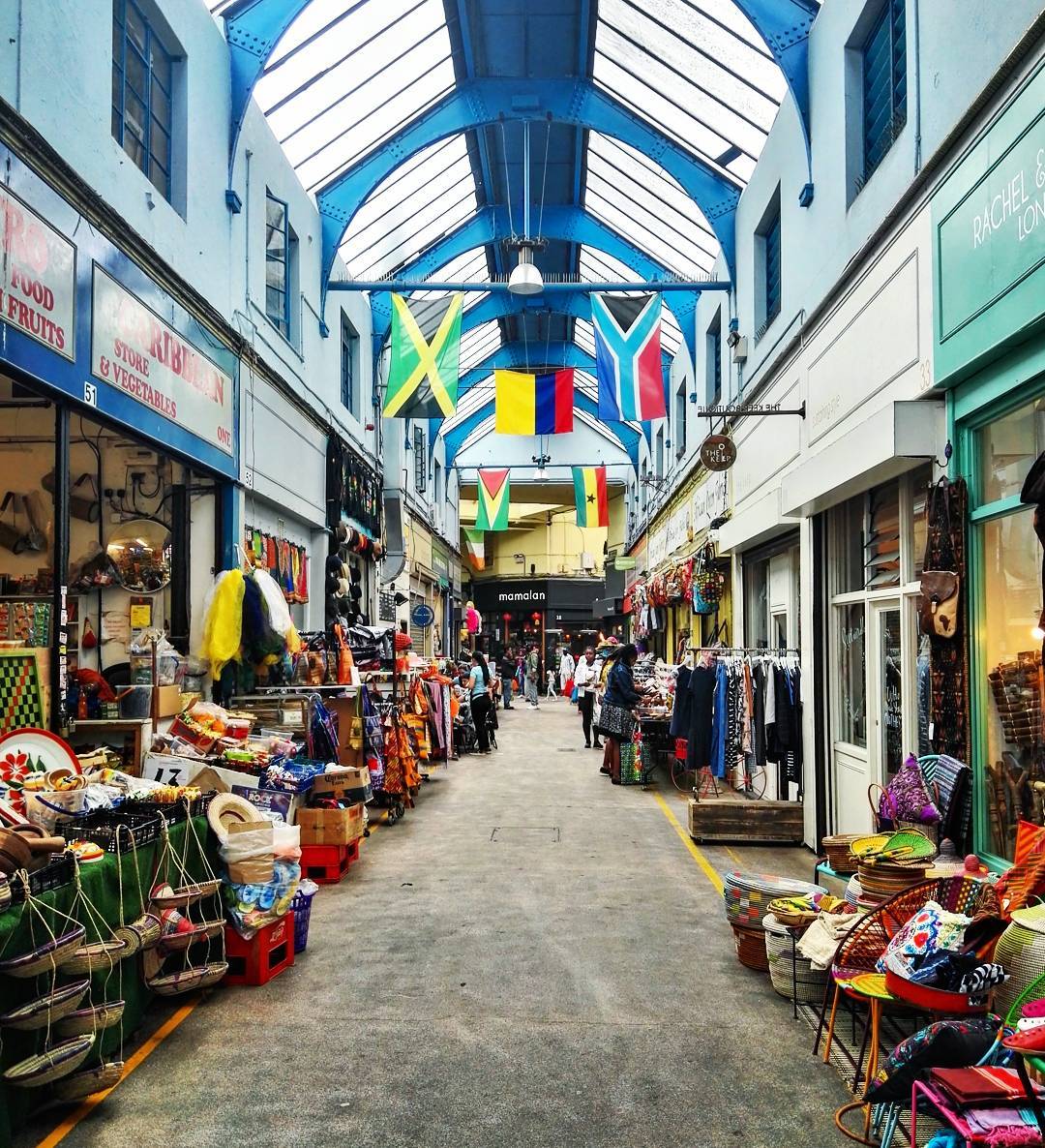“We gonna rock down to Electric Avenue and then we’ll take it higher” sang Eddy Grant in his 1982 hit single. The song - his response to the 1981 Brixton riots - centred on one of the area’s most famous streets and home to part of Brixton Markets. Brixton Markets now comprises of the street market down Electric Avenue, Pope’s Road and Brixton Station Road plus the arcades of Brixton Village, Market Row and Reliance Arcade.
The market began in the 1870s as the area was becoming one of London’s rapidly expanding Victorian middle-class suburbs following the railway station opening in 1862. Electric Avenue was built in the 1880s and was so-named as it was one of the first streets to have electric light. The area became a popular shopping destination due not only to the lights and covered iron canopy but also the array of shops – including London’s first department store: Bon Marché on Brixton Road – and street entertainers. At the turn of the century the middle classes moved out and the area became home to a large working class population. Many large houses were subsequently converted into flats.
Electric avenue in 1921
Electric Avenue in 2003
Post-war, the area was in decline having suffered badly in WWII bombing. Many properties fell into disrepair or were split into smaller lodgings. Such lodgings would become home to the Windrush generation (named after the Empire Windrush, the first ship bringing migrants) who began arriving in the 40s from the West Indies, and who have since shaped the culture and diversity of the entire area including the wares that are traded across the market sites. With this growth in population came a greater demand for goods, and thus the street market continued expanding. During the 50s, Electric Avenue was booming market which hosted numerous vendors from across South London. The market developed a more notorious reputation towards the 70s and 80s as Brixton gradually became more impoverished, and became something of a crime hotspot in South London. The aforementioned riots took place nearby and affected many residents and traders.
The arcades that now house Brixton Village, Market Row and Reliance Arcade were built in the 1920s and 1930s to provide alternative accommodation for traders who were losing their outdoor pitches due to road widening, or who couldn’t afford premises on the main high street. Reliance Arcade was built in 1924 along land that was previously occupied by a Georgian terrace and was developed to include an Egyptian tomb façade. The narrow arcade is now wedged between a JD sports and a phone shop and could go unmissed if it wasn’t for its striking art deco signage. The arcade’s tiny units are home to independent businesses including a cobbler, herbal medicine, clothes shops and household goods. In 2014 the Grade II listed building was added to English Heritage’s ‘At Risk’ register and efforts are being put in place to refurbish the arcade.
Market Row, built in 1928, is situated between Altantic Road, Coldharbour Lane and Electric Lane. It’s double height interior makes it feel much more spacious than Reliance Arcade and the ceiling windows provide plenty of natural light. Brixton Village (originally named Granville Arcade) was built in 1937, and was the the last of the arcades to be constructed. It links Coldharbour Lane, Atlantic Road and Popes Road and is in a similar double-level and ceiling window style to Market Row. Both these arcades are now home to some of London’s best food outlets including Mama Lan, family-run KaoSarn, and Bellantoni’s. Despite concerns that the new traders are changing the area for the worse they are managing to work alongside the older traders to provide a unique shopping and dining experience for locals, and those from much further afield. Outside you will find around eighty traders – many of whom have carried on the stalls from their forebears - selling their good throughout the week.
In the early days stalls sold ‘traditional’ fruit and veg: potatoes, apples, carrots, onions. Whereas over time the stalls have been more known for selling Caribbean and African foodstuffs such as yams and plantains, as well as reggae music, and clothing that all reflects the changes in the makeup of the community. The market is undoubtedly still one of the best places in London to pick up speciality food stuffs from Alphonso mangoes to ackee and many others at a fraction of the price of supermarkets. The Brixton Station Road markets now include street food, themed Saturday markets including a makers’ and vintage markets and a Sunday farmers’ market. You can find out more about trading times, and see a map of the whole market complex here.
what is the south london club card?
The South London Club is a local discount card to help support small independent businesses across South London whilst saving all who live, work & play in South London money! With over 500+ local discounts to choose from, you will discover & explore all the best hidden gems in South London. Join over 4,000 of us & celebrate all that's independent in South London!








